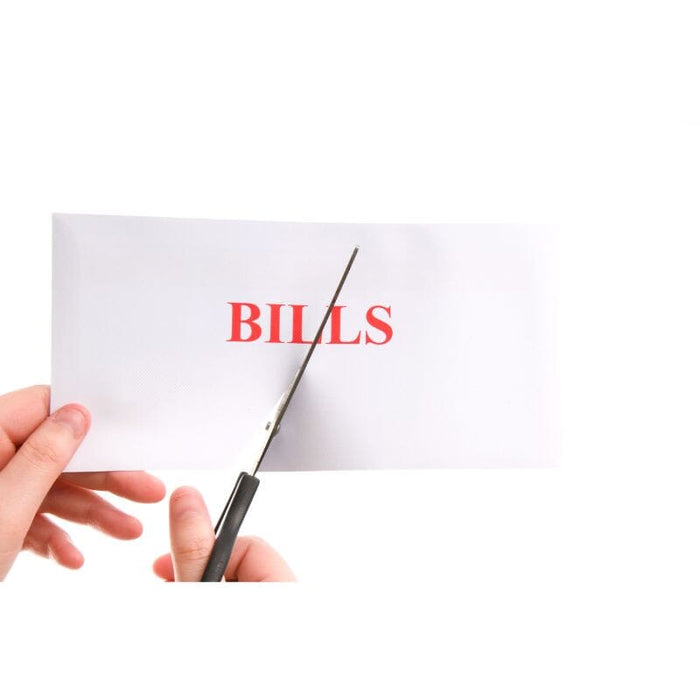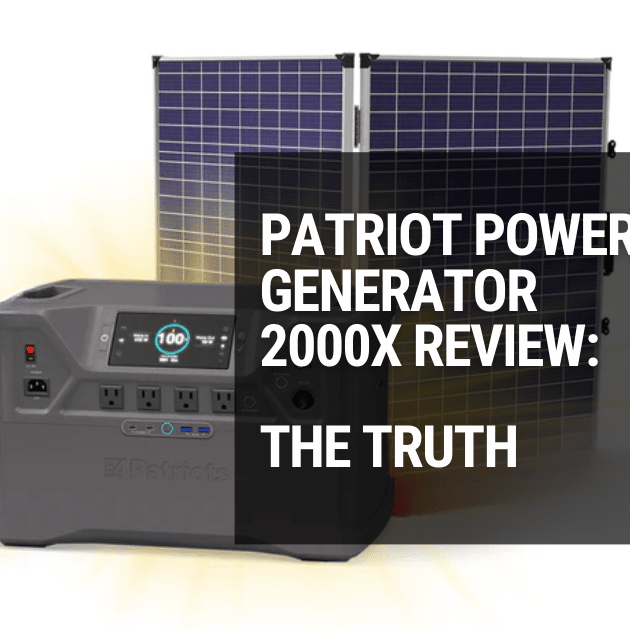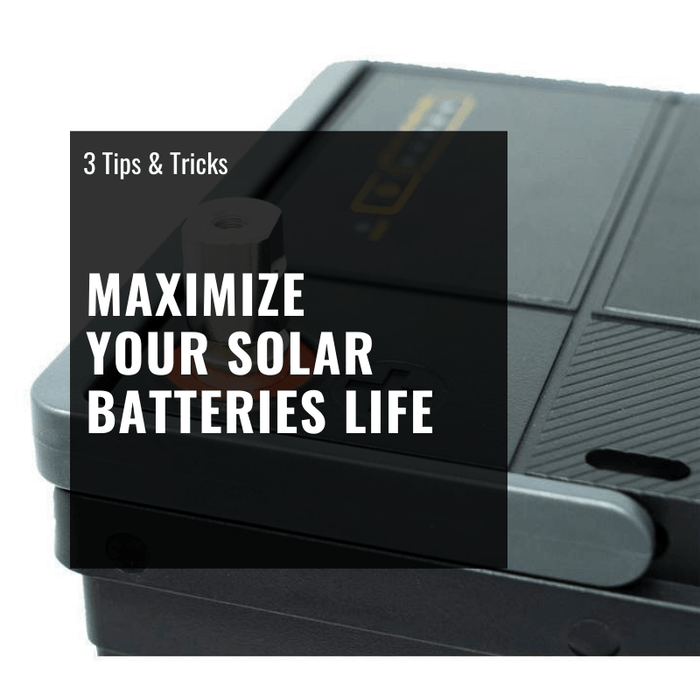
How to Connect Solar Panels to a Battery Bank, Charge Controller, & Inverter

Table of Contents
Short on Time? Here’s The Article Summary
This article from ShopSolar.com provides a guide on how to connect solar panels to a battery bank, charge controller, and inverter in a DIY solar panel system. It emphasizes the importance of proper preparation, using the right components, and ensuring safety throughout the installation process. The article outlines the parts of a DIY solar panel system, including solar panels, a charge controller, a battery bank, an inverter, and necessary wiring. It also mentions the convenience of solar generators, which combine these components into a single unit.
Additionally, the article provides step-by-step instructions for connecting solar panels to a charge controller, a battery bank, and an inverter. It emphasizes the importance of correctly identifying positive and negative terminals and using appropriate cables for connections. Overall, the article serves as a useful resource for those looking to build their own off-grid DIY renewable energy system using solar panels.
Introduction
If you’re wondering how to connect solar panels to a battery bank, charge controller, or inverter, then you’ve arrived at the perfect location. Over the past few years, ShopSolar.com has slowly become the internet's best resource for DIY solar panel systems, so we know a thing or two about putting them together.
In this article, we will demonstrate just how easy it is to connect solar panels to a battery bank, charge controller, and inverter when building an off-grid DIY renewable energy system. Along the way, we will also have some helpful links for further information and collections of some of our best solar energy products.
But First… How to Prepare for a Solar Installation
Woah… easy there, before you connect your solar panels to the rest of your system, it is vitally crucial that you have the proper parts and pieces to ensure a safe and reliable renewable energy system.
Here, we recommend that you remember the 5 P’s: Proper preparation prevents poor performance. So how do you know that your solar panels will perform efficiently? Well, one of the easiest ways to know for sure is with one of our solar energy kits.
With intentionally sourced solar panels, wires, batteries, charge controllers, and inverters, our solar energy kits are designed for a simple, plug-and-play connection with all of the necessary directions and customer support to help you achieve your power.
Parts of a DIY Solar Panel System
Obviously, your solar energy system will be centered around your solar panels, generating emission-free electricity anywhere the sun shines. Aside from the panels, the charge controller helps regulate the electrical flow to the battery, which supplies AC power with help from the inverter.
Between all of the main system parts, wires and connecting cables are required to efficiently transfer the energy, and it is very important to purchase components with the correct connecting parts and wire gauges for one another.
Again, our solar kits are sold with everything designed for easy interconnection. The process becomes even easier when adopting a solar generator. Solar generators pack batteries, charge controllers, inverters (and other cool features), into one convenient package. This way, all you need to do is connect the solar panels directly to the generator to begin charging and using its battery power.
What You Need to Get Started
Aside from the solar panels, battery bank, charge controller, inverter, and wiring, there are a few other things that you will need on hand when beginning a permanently affixed installation. Depending on your installation, solar panels for homes, RVs, and off-grid instances may require the following hardware:
- Mounting brackets
- Screws other and mounting materials
- Mechanical lugs
- 2 AWG cable
- Screwdriver
- Cable cutters
- Drill
- Red electrical tape
- Crescent wrench
If you are designing your solar panel system to serve as a home backup in the event of a blackout, then you will also want to purchase a transfer switch and/or an EMP Shield device. When the electricity goes out, a transfer switch can be used to seamlessly power a home with a solar battery backup, while the EMP shield device will protect your home against EMPs and lightning strikes.

How to Connect Solar Panels to a Charge Controller
Okay, ready to get technical? If you are building your own DIY solar energy system, we will outline the steps of how to connect solar panels to a charge controller below. Solar panels can be connected in a series or parallel, and charge controllers should be rated to handle the appropriate amount of wattage, voltage, and amperage of the system’s solar input.
Step 1: Verify The Parts Will Cooperate
The first piece of advice: do not cut corners when purchasing a charge controller. We recommend buying a regulator that is rated to handle your maximum solar input and more, as it never hurts to have a little extra room.
Step 2: Find the Positives and Negatives
Here, we’re not talking about how your day went. Instead, you must find the positive and negative terminals of your charge controller, and the corresponding sockets on your solar panel. Pay very close attention to the +’s and -’s, as connecting the wrong parts could critically damage your charge controller.
Step 3: Connect the Wires
Finally, connect your positive terminals on the solar panels and charge controllers to one another with an MC4 cable or special adapter. Likewise, connect the negative terminals between the two components. MC4 cables are the easiest way to accomplish this, and most non-MC4 solar parts can utilize an adapter for a simple connection.
How to Connect Solar Panels to a Battery Bank
From the solar panels and through the charge controller, every watt-hour of electricity produced in an off-grid DIY system is sent to a solar battery bank. The battery bank is actually connected to the charge controller, rather than the solar panels themselves, though some products may come with the charge controller already attached.

Step 1: Make Sure the Area and Components are Safe
Before connecting your battery bank, move your solar panels out of the sun or better yet disconnect them to ensure that no electricity will be moving through your system. Examine your battery to make sure there are no damages or rust on the terminals.
Step 2: Remove the Ring Terminal and Connect the Wires
Prepare your battery for charge controller connection by removing the rings from the positive and negative terminals. Connect the battery terminals to the corresponding positive and negative inputs of your charge controller. Here, it may be necessary to cover any exposed wires to ensure ongoing safety.
Step 3: Screw on the Battery Rings
Lastly, screw the battery rings back on to safely and securely establish a firm connection between the battery bank and the charge controller.
How to Connect Solar Panels to an Inverter
Finally, the solar power inverter is connected to the solar battery in an off-grid system. For grid-tied solar panels, large inverters or even small micro inverters may be connected directly after the charge controllers, in lieu of a storage battery onsite. If you do not plan to use any AC electricity, then a solar inverter is entirely optional.

Step 1: Remove Battery Rings Once Again
Your inverter will be connected to the positive and negative terminals of your battery in the same place where the charge controller is attached. Safely remove the battery rings while the system is not producing electricity to prepare your inverter connection.
Step 2: Match Positives and Negatives
Like in all of our other steps, here you must find the positive and negative terminals of your inverter and attach the wires to the battery appropriately. Once again, place the battery rings back on top of the connections, and cover any exposed wires that may become damaged.
Step 3: Test Your System
With the solar panels, battery bank, charge controller, and inverter connected, you are now ready to produce and use renewable, solar energy. Simply bring your panels out in the sun, plug in an appliance or electronic to the inverter, and watch the magic happen.
How to Connect Solar Panels to a Battery Bank, Charge Controller, and Inverter - Conclusion
We hope that this guide has helped break down the process of connecting a solar panel system into a few simple steps. For the easiest possible installation, we highly recommend browsing all of our specifically designed solar energy kits for simple connection and efficient power generation.
The Ultimate Solar + Storage Blueprint (Mini Course)
Struggling to understand how solar + storage systems actually work? Looking to build or buy your own solar power system one day but not sure what you need? Just looking to learn more about solar, batteries and electricity?
Join 15,000+ solar enthusiasts breaking free from their energy dependence with this short step-by-step video course that will make you a solar + storage expert. Start your journey to energy independence today.
Who is ShopSolar.com?
ShopSolar.com is the #1 digital platform that enables consumers & businesses to source and purchase complete solar + storage solutions direct, saving you thousands in time, energy and money! With over 40,000+ happy customers, we’re on a mission to make solar simple, transparent and affordable.
Did You Find Our Blog Helpful? Then Consider Checking:
- Solar Panel Wiring
- Solar Panels Series or Parallel
- How to Connect Solar Panels to the Grid
- How to Connect Solar Panels to House
- How to Connect a Solar Panel to a Motor
- Solar Panel Disconnect
- Can You Hook a Solar Panel Directly to a Battery?
- How to Calculate Solar Panel Battery and Inverter
- How to Heat a Greenhouse with Solar Panels?
- How to Test Solar Panels
- How to Choose Solar Panels
- How To Make Solar Panels More Efficient
- How To Use Solar Panels During Power Outage
- How To Get Rid of Pigeons Under Solar Panels
- How to Make Money with Solar Panels?




Leave a comment